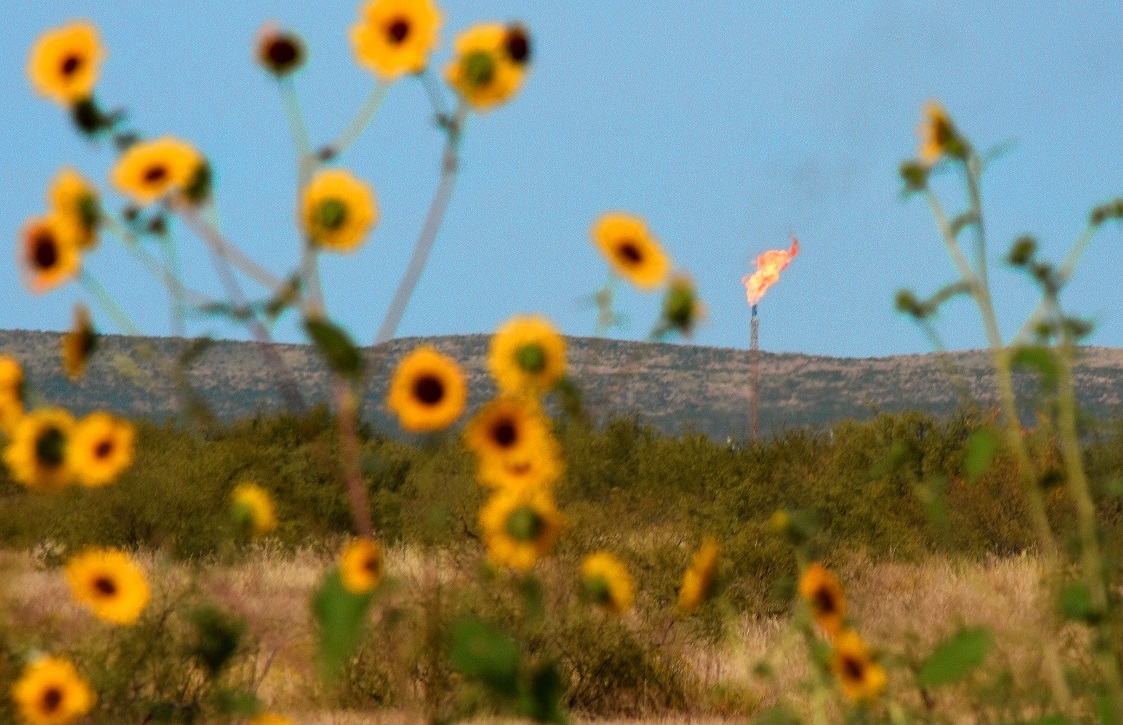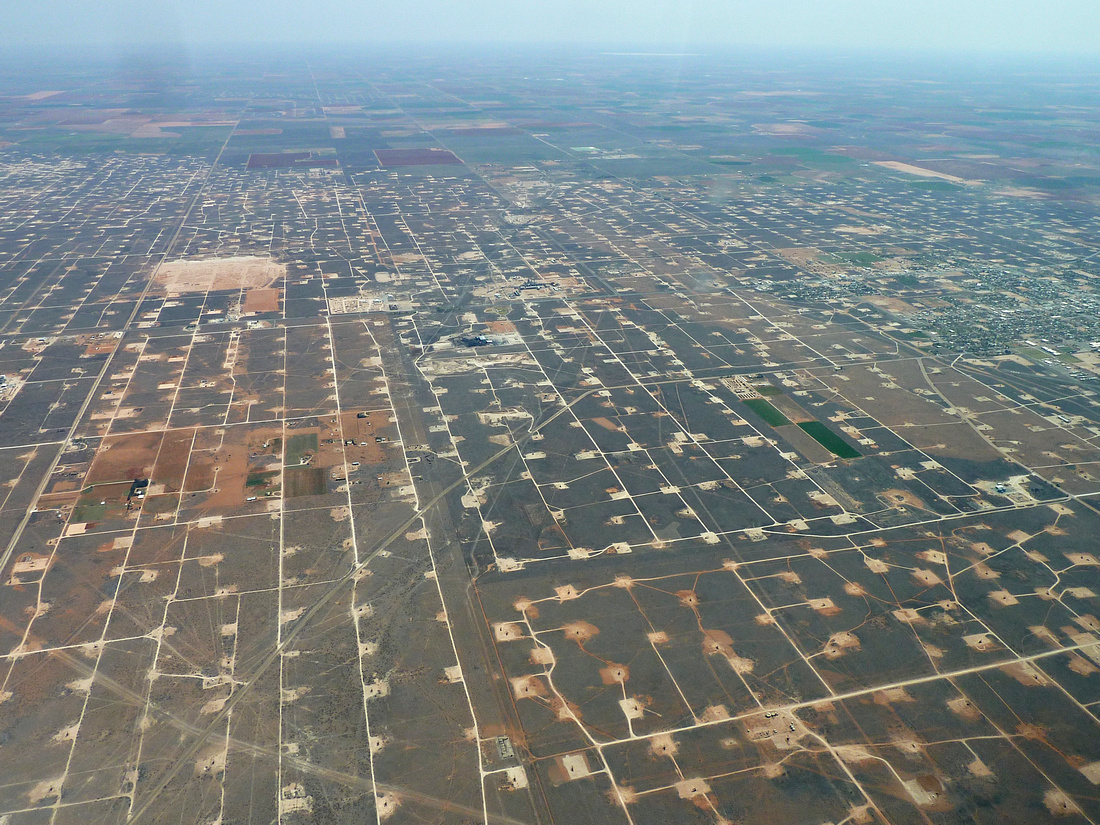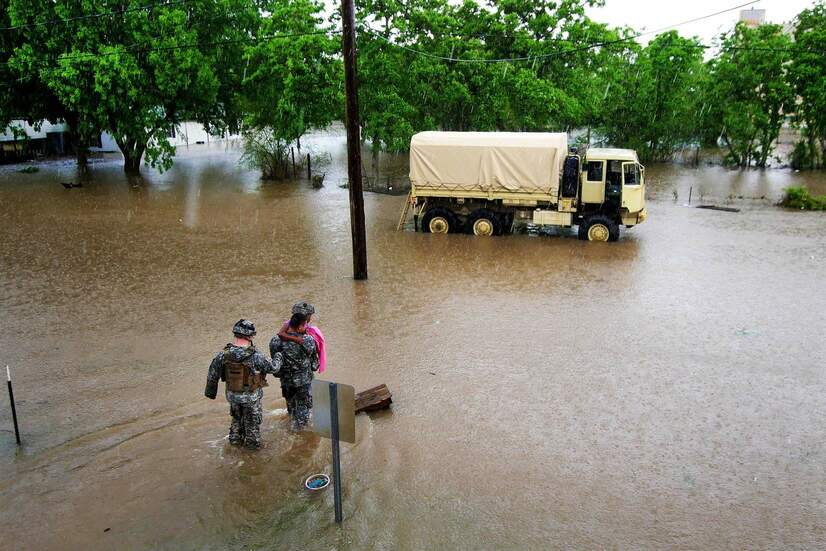Climate-changing pollution reached unprecedented levels in 2018. That’s both judged against the last 60 years of modern measurements and against 800,000 years of data culled from ice cores, according to the U.S. government’s State of the Climate report, which was published this week with the American Meteorological Society.
That pollution creates a greenhouse effect that is over 42 percent stronger than it was in 1990, the report added.
And while carbon dioxide hit a new level last year, it isn’t the only climate-changing gas that’s on the rise globally. Pollution of the powerful but short-lived greenhouse gas methane also climbed in 2018, showing an increase “higher than the average growth rate over the past decade,” the report adds.
A new Cornell University study published today in the scientific journal Biogeosciences helps to explain what sparked the surge in those methane concentrations, both here in the U.S. and around the world.
One big culprit: shale drilling and fracking.
“This recent increase in methane is massive,” said Cornell professor Robert Howarth, who authored that study. “It’s globally significant. It’s contributed to some of the increase in global warming we’ve seen and shale gas is a major player.”
The new Cornell paper relies on “chemical fingerprints” of the methane pollution in the Earth’s atmosphere. It describes how methane molecules from shale gas and oil production carry different kinds of carbon than methane from either conventional natural gas drilling or coal beds. The methane molecules from shale drilling contain less of the carbon-13 isotope versus carbon-12, the study suggests, using this ratio as one way to hone in on the source of the natural gas.
That chemical fingerprint led the Cornell researchers to point to the shale industry as the major source of the leaks.
Earlier studies “erroneously concluded” that the cause of rising methane pollution was “biological,” Howarth said in a statement on the new paper. But methane from cows or wetlands can also be distinguished from methane from fossil fuels based on its carbon-13 content — allowing the Cornell researchers to conclude that the rise in methane pollution we see now did not come from biological sources but instead came from the fracking rush.
The vast majority of new natural gas production over the past decade has come from shale drilling and fracking in North America. The climate impacts, however, spread worldwide.
Understanding the source of that natural gas allows policy-makers to take the most effective actions possible — if there’s the political will to act.
And the good news is that methane pollution, while extraordinarily powerful compared to CO2, also breaks down in the atmosphere much faster, Howarth said.
“Reducing methane now can provide an instant way to slow global warming and meet the United Nations’ target of keeping the planet well below a 2-degree Celsius average rise,” Howarth said, referring to the 2015 Paris Agreement.
Permian Pollution
Oil and gas fields pock the land around Midland, Texas, in the Permian shale. Credit: EcoFlight, CC BY 2.0
Named after a geologic period that ended in the worst mass extinction in global history, the Permian basin today is a place where oil and gas drillers routinely and deliberately allow methane — also known as natural gas or shale gas — to leak into the air, a practice called “venting” in the industry.
This year saw record-smashing levels of venting, as well as flaring — when drillers light the methane leaks on fire in an attempt to turn methane into CO2 by burning it, somewhat reducing the greenhouse gas pollution.
Every day, drillers flared and vented up to 661 million cubic feet of methane a day in the Permian, a study published this summer by Rystad Energy concluded.
“While oil production in the Permian dipped at the beginning of the year, gas production in the basin has remained healthy, with steadily increasing production as the driving force behind increased venting and flaring,” said Artem Abramov, head of shale research at Rystad, adding that levels were unlikely to fall until at least October of this year.
The Bakken shale, however, was not far behind the Permian in methane pollution, spewing out 500 million cubic feet of methane a day in the first three months of 2019.
That’s about 12 billion cubic feet of wasted natural gas per year — enough to have supplied entire nations for a year, the report adds, listing Israel, Romania, and Colombia as examples. In 2018, drillers flared off enough natural gas to meet the demand of every household in Texas — but instead, that natural gas was burned as a waste product.
Among the worst offenders are the world’s largest oil and gas drilling companies. While the average driller flared off roughly 5 percent of its gas, ExxonMobil flared roughly 8 percent, Rystad found.
Oil giant BP racked up an even worse record. “About 18 percent of the gas produced on BP’s acreage in the Permian was either flared or released directly into the air during this year’s first quarter, compared with an average of 5 percent across the region, according to a Rystad Energy analysis of public data,” the Wall Street Journal reported last week.
Via @WSJ: “(#oilandgas) companies are scrambling to rein in emissions over concerns from their executives, shareholders and environmentalists that gas waste could undermine the argument” for having any future with a #climate in crisis. https://t.co/zoMrTxo022 #cutmethane pic.twitter.com/3H9dzpnwiX
— EARTHWORKS (@Earthworks) August 9, 2019
Even shale executives have called for action.
“It’s a black eye for the Permian basin,” Pioneer Natural Resources CEO Scott Sheffield said at an energy conference at Columbia University in April. “The state, the pipeline companies, and the producers — we all need to come together to figure out a way to stop the flaring.”
But the Texas Railroad Commission — the state’s oil and gas regulator, charged with protecting the environment — has continued to allow companies that say they have no gas pipeline access to vent or flare away their methane so they can drill for oil.
“Flaring is a critical part of the well construction process and it is important companies be able to continue to use this tool,” Railroad Commission Chairman Wayne Christian said in a statement this week. His comments came in response to the commission’s ruling that oil driller EXCO Resources would be allowed to continue drilling over the objection of the pipeline company, Williams, that sought to carry that gas to market. EXCO had argued to the commission that it lacked pipeline access because it was cheaper to flare the natural gas than to buy space on the pipeline.
“The railroad commission routinely approves thousands of uncontested flaring permits a year after energy companies state there’s no available pipeline,” the Journal of Petroleum Technology, which covered the EXCO case, found.
Reports on the ground suggest that methane leaks in Texas may be even worse than the industry has reported.
“Nobody’s watching, so they [the companies] can take all the shortcuts they want to,” Earthworks organizer Sharon Wilson told the Wall Street Journal in July. Of the over 100 methane leak complaints Earthworks filed in Texas and New Mexico since 2018, state regulators had by July fined drillers or required repairs in less than 10 percent of cases, Earthworks estimated to the Journal.
Climate Continues to Warm
Soldiers carry a young girl through deep water to load her onto a light multi-terrain vehicle during severe flooding in Wharton, Texas, April 21, 2016. Credit: Texas Army National Guard/1st Lt. Zachary West, public domain
With the oil and gas business moving ahead as usual, the global climate has continued to warm rapidly.
In 2018, the U.S. experienced 14 separate weather and climate disasters that each caused over $1 billion in damage, according to the National Oceanic and Atmospheric Administration. And that has been followed this year by six additional billion-dollar disasters on the same scale, as of July 9.
Artic sea ice has continued to melt, reaching “a new record low” in July, according to the National Snow and Ice Data Center, and has included particularly strong melting of the Greenland ice sheet.
For residents of Greenland, the warm weather has caused fear and anxiety, according to a survey led by University of Copenhagen social scientist Kelton Minor and published on August 11.
“My father is a fisher and hunter, and it is hard for our family that he cannot hunt animals like when I was little, and I miss that. I miss dog sledding and fishing on the ice, and just like our culture, the animals that we hunt are disappearing slowly, and now I cannot teach my son like my father taught me,” one survey respondent told the researchers.
Others say that, when it comes to communicating about climate change, it’s important to bear in mind that there is still time to act to prevent the worst potential impacts.
“Climate change cannot become yet another doomsday narrative,” Sheril Kirshenbaum, executive director of Science Debate, wrote in a recent Scientific American op-ed. Kirshenbaum’s piece appeared in a column pushing back against an interpretation of the United Nations’ dire warnings that just over a decade remains for taking decisive action to slow the climate crisis (misleadingly interpreted in some circles as “12 years until we’re doomed,” in the words of Fox News).
“It’s far too important and deadly serious. Climate change deserves to be addressed with a level of gravity that spurs informed policies, thoughtful planning, and dedicated leadership at the local, national, and global scale,” wrote Kirshenbaum.
With that in mind, scientists say that one of the fastest and most effective ways to act is to slash methane releases — both accidental leaks and deliberate flaring and venting — into the air.
“If we can stop pouring methane into the atmosphere, it will dissipate,” Howarth said. “It goes away pretty quickly, compared to carbon dioxide. It’s the low-hanging fruit to slow global warming.”
Main image: A gas flare in the Permian basin near Midland, Texas. Credit: © 2017 Laura Evangelisto
Subscribe to our newsletter
Stay up to date with DeSmog news and alerts








